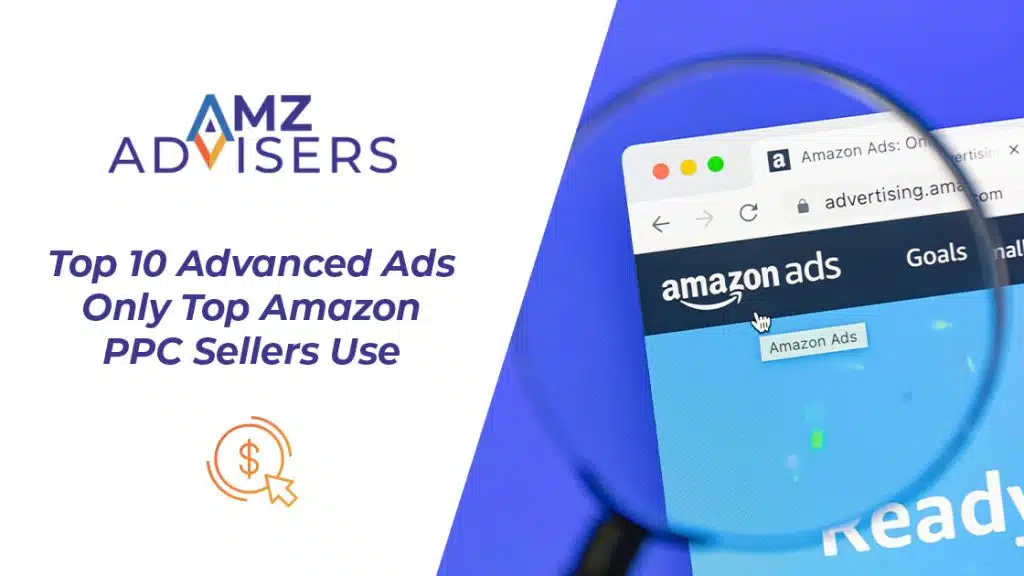Amazon is one of the most trusted sources for sellers and customers. That’s why 44% of all product searches start on Amazon.
However, sellers still experience drawbacks. Amazon has 9.7 million sellers, making it a competitive marketplace. Fortunately, Amazon makes marketing and advertising easy. The secret is knowing how to use these resources to your advantage.
Amazon search terms are the perfect example. When you optimize your listings for Amazon search, your paid and organic listings will likely appear on top of Amazon searches. But what are search terms and how do you optimize them?
About the Amazon Search Engine
Before we explain how to optimize your listings for Amazon search terms, we must understand Amazon’s algorithm and how it ranks keywords.
Amazon continually updates its algorithm. This algorithm judges listings based on specific factors and uses this information to determine how these products and sellers rank.
The latest update is called the A10 algorithm. A10 focuses on listing, seller quality, and customer satisfaction to rank listings. Here are some of the specific factors it considers:
- Relevance
- Seller authority
- Broad array of products
- Categories
- External traffic
- Strong sales history
- Click-through rates
Did you notice anything here? Keywords aren’t one of the major factors that the A10 algorithm considers when ranking listings. That doesn’t mean you shouldn’t prioritize keyword optimization, but you should approach keyword research and content creation with your audience in mind.
Steps to Use Search Terms to Improve Visibility on Amazon
You can still use Amazon search terms to increase visibility and SEO rankings. Here are a few steps to get you started.
Conduct Keyword Research
While conducting keyword research is the cornerstone of any SEO campaign, the way marketers approach this step has changed over the last few years.
Previously, SEO professionals weighed monthly traffic and competition metrics to decide which keywords to optimize. While these are still important factors, marketers are now weighing another essential metric: which terms your customers are likelier to search for.
In addition to analyzing keyword performance, it’s integral to understand your target audience and the search terms that will benefit their shopping experience.
Let’s say you sell photography equipment. A keyword like “DSLR camera lens” is too vague. Your customers are searching for specific lenses, such as “telephoto lenses” or “fish-eye lenses.”
Understand your target market. In this case, your audience may include beginner photographers, hobby photographers, and/or even pros. Use different terms and offer educational resources for new photographers.
Choose a PKW and Secondary Keywords
When you conduct keyword research, collect several search terms that perform well and will attract your target audience.
Using another example, let’s say you sell winter clothing. You can use a vague keyword like “women’s jackets” for your entire range of women’s winter wear, but optimizing your listings for specific keywords is best. Examples include “women’s puffer jackets” and alternative wording like “shop puffer jackets.”
Don’t forget to use synonyms, since there’s a chance your customers will all search for different things. Using another example, let’s say you sell kitchen products. You can optimize your listings for “coffee maker” and “coffee machine” to satisfy both search terms.
Include Keywords in the Title
When you find your primary keyword, use it in the title of your product listings. This is effective for two reasons: user intent, since this keyword explains your product, and for the Amazon algorithm to display your products correctly on search results.
You must still write your product title for humans; in other words, don’t stuff keywords to attempt to manipulate the algorithms. Use important details to identify the products, specifically the ones your customers find useful.
At the same time, don’t write long titles; while Amazon allows you to use 200 characters, 50-60 is the sweet spot. You can also use this formula to create titles:
Product type + brand name + descriptions
Let’s say you sell wine products and are writing a title for specialty wine glasses. Your title may look something like this:
Art Deco Wine Glasses by Wine Co., Multi-Colored Glasses, Set of 7
In this example, you identify the product and use different keywords (such as “multi-colored”). The title also makes grammatical sense. You can also add specific descriptions, such as the wine best used for the glasses (i.e., signifying a champagne flute).
Include the Keywords in Your Product Description
Product descriptions are the perfect opportunity to describe your products in-depth and are often the best place to use secondary keywords. That said, only use search terms that correspond with your product and help the customer decide.
Examples of secondary keywords to use include:
- Color
- Material
- Size
- Dimensions
- Quantity
- Care instructions
- Warranty
Always naturally use keywords―don’t keyword stuff. Not only does this hurt your customer’s experience, but it won’t do anything for your SEO. The A10 algorithm prioritizes seller authority and sales over keyword stuffing and other black hat techniques.
Create a Keyword-Rich Features Section
The featured bullet points are also the perfect place to throw in extra secondary keywords. Like the product description, mention important features as bullet points to benefit the customer. Focus on what makes your product special and unique, such as an eye-catching design.
Unlike the product description, the feature bullet points should be short. Instead of using a keyword phrase like “bar soap available in scents orange, lime, and coconut,” use a shorter search term like “scented bar soap” and list the fragrances in the description.
Write Keyword-Rich Alt Tags for Your Images
Alt tags are brief descriptions of your images. They’re intended for your audience and search engines, as Amazon’s algorithm will crawl the images and extract the backend keywords from the tags.
How do you write a good alt tag? While alt tags are short (no longer than one sentence), they’re also an excellent way to use keywords and highlight unique features of your product. Try to use at least one keyword in your alt text.
Remember that alt text isn’t visible on the product page. However, visually impaired customers can hear the description, and Amazon can crawl the alt text from the backend.
Optimize Your Advertising and Sponsored Products
You can also use these keywords in your paid marketing campaigns. While Amazon prioritizes organic marketing over PPC, investing in sponsored products and other advertising methods is still beneficial.
With Sponsored Products, your products will appear at the top of search results for your chosen keyword. This is a cost-per-click method. Each keyword has a price; when a customer clicks your sponsored ad, you’ll pay the price of the keyword.
Every keyword has a different price, ranging from a few cents to over one dollar. You can find the price for a chosen search term on most keyword research tools.
Amazon Search Terms Optimization FAQs
What are Amazon search terms?
Amazon search terms are queries that consumers enter into searches. Amazon’s A10 algorithm crawls different listings and displays the results based on rank, relevance, and seller authority. There are also other keywords, such as backend and negative keywords.
Why is it important to optimize Amazon search terms?
Optimizing your Amazon listing search terms will increase your visibility and your product’s ranking, improving your chances of making sales.
What are some common mistakes when optimizing for Amazon search terms?
Many sellers make common mistakes when using Amazon keywords, including using prohibited terms, keyword stuffing, using ASINs in the listing, repetition, subjective statements, lacking stop words, and using promotional keywords (branded search terms are fine).
Should I use tools when optimizing search terms on Amazon?
Absolutely! You can use an Amazon search terms tool to find the best keywords. In addition to keyword tools, there are tools for product opportunities, brand analytics, and Amazon ads.
Struggling to Optimize Amazon Search Terms?
Even though Amazon dominates the ecommerce landscape, there’s a lot of competition in the marketplace. Fortunately, sellers can improve visibility by optimizing their listings for the top Amazon search terms.
Amazon’s powerful A10 algorithm will crawl your listings and extract your keywords, ranking them on corresponding SERPs. You can also invest in your paid strategy to appear on top of all search results.
Have you tried these strategies and are still not getting the same results? We help you find keyword opportunities for organic and paid marketing campaigns. You’ll also get a devoted team to ensure we meet all your goals and KPIs.
Contact us to get started.
Author






